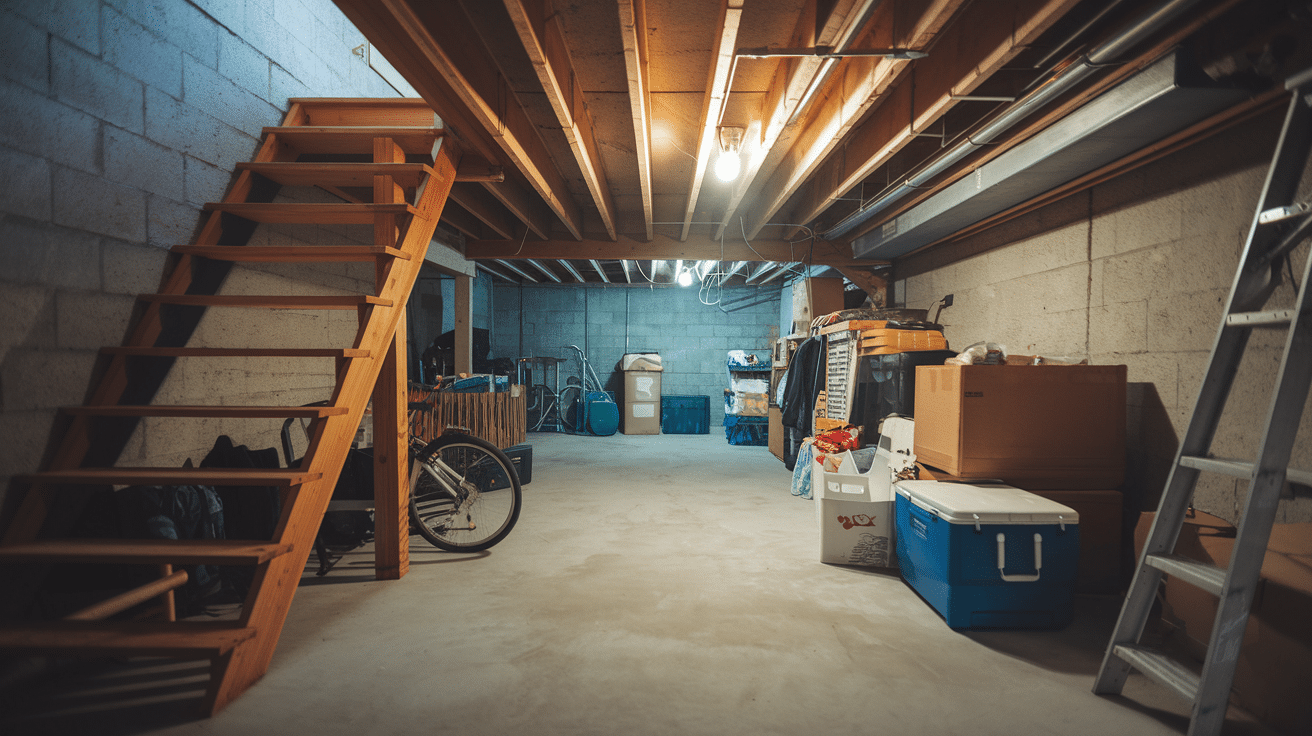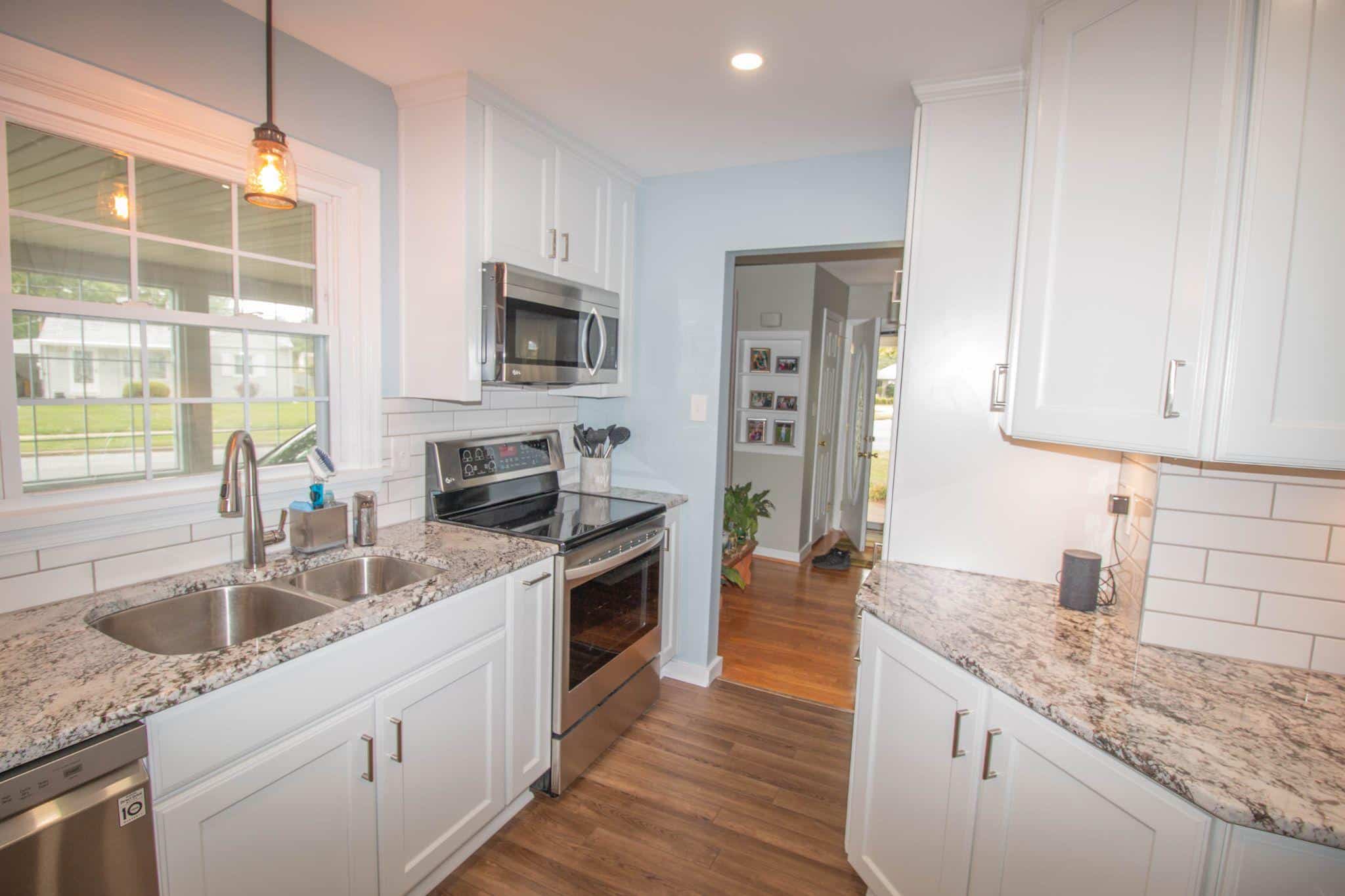Have you ever wished for more space in your home without the hassle and cost of moving to a bigger house?
You’re not alone in feeling cramped when your family outgrows your current living space. Many homeowners face this challenge and wonder if they can add a basement to their existing house.
The good news is that adding a basement is possible for most homes and can solve your space problems while boosting your property value.
Extra storage, another bedroom, or a rental unit can become achievable through basement additions that offer flexible solutions within your current footprint.
This article will show you everything you need to know about adding a basement to your house, from feasibility factors and construction methods to costs and alternatives.
Why Homeowners Want to Add a Basement
Space shortages drive most basement addition projects. Families outgrow their homes but can’t or won’t move to larger properties. Storage solutions help free up closets and garages from clutter. Living space expansion adds bedrooms, offices, or entertainment rooms without expanding your home’s footprint.
Property value boost makes basement additions a smart financial move. Rental income potential from basement apartments helps offset construction loans.
The feasibility depends on your current foundation type, local soil conditions, and municipal building codes. Houses with crawl spaces or shallow foundations work best for conversions..
|
Does Adding a Basement Increase Your Home Value? Adding a basement to your house significantly boosts your property’s market value. Real estate appraisers typically add 50 to 70 percent of your construction costs to your home’s appraised value. Finished basements add more value than unfinished storage areas. |
Advantages of Adding a Basement
Adding a basement provides multiple benefits that make the investment worthwhile for many homeowners.
- Extra Living Space: A basement gives you substantial new space without expanding your home’s footprint. The space works well for bedrooms, offices, gyms, workshops, or storage areas.
- Increased Home Value: Real estate appraisers typically add 50-70% of the basement’s cost to your home’s value. This return on investment beats most renovation projects.
- Flexible Use Options: Basements adapt to different purposes throughout your family’s life. Popular uses include home theaters, guest bedrooms, home offices, or workout rooms.
- Better Home Organization: Moving storage items to the basement creates more functional space in your main living areas. Your home feels less cluttered and more organized.
- Potential Rental Income: A finished basement with a separate entrance can generate $800-2,000 monthly rent in most markets. This income helps offset construction loans.
Step-by-Step Process
Adding a basement follows a specific sequence. Each step builds on the previous work.
Step 1. Feasibility Assessment
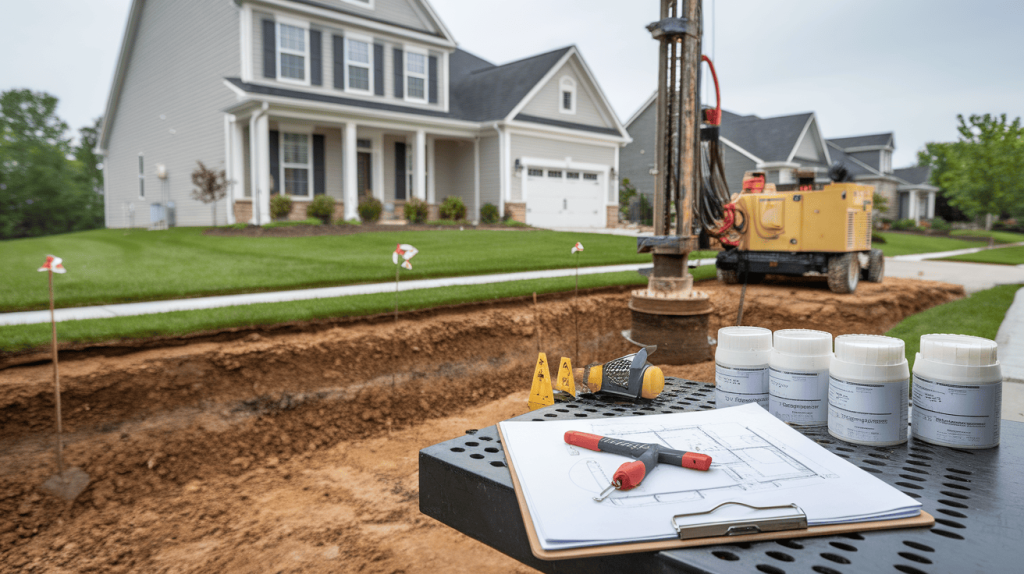
Start with a professional evaluation. Structural engineers assess your foundation, soil, and house condition. They determine if your home can support a basement addition.
The assessment takes 1-2 weeks. Engineers provide a written report with recommendations. This report helps you decide whether to proceed.
Soil testing comes next. Contractors take samples to understand ground conditions. Test results influence excavation methods and costs.
Step 2. Permits and Planning
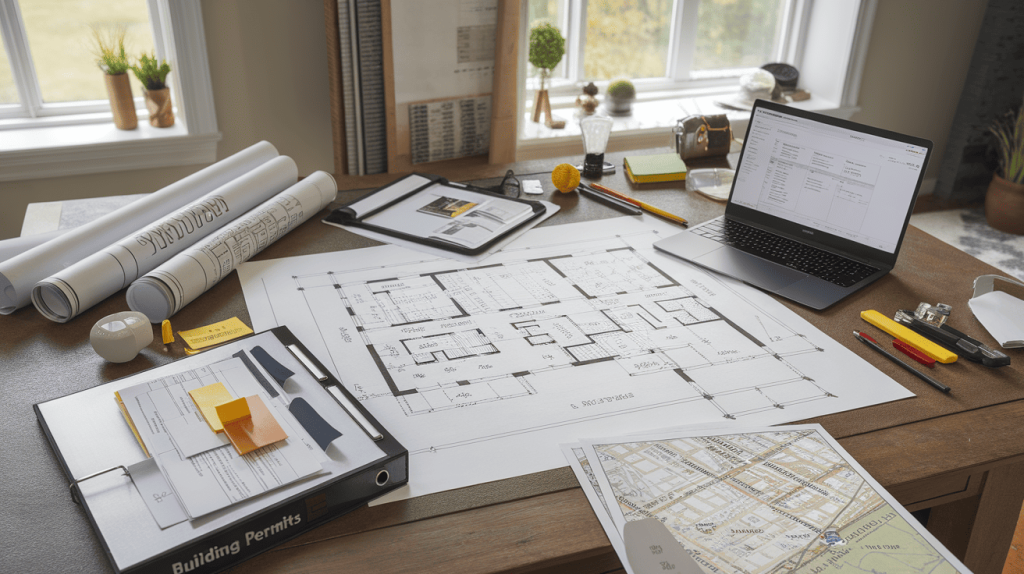
Apply for building permits once you decide to proceed. Submit architectural plans and engineering reports to your city’s building department.
Permit approval takes 4-8 weeks in most cities. Some areas require neighbor notification or special hearings. Plan for potential delays in the approval process.
Create detailed construction plans during this phase. Include electrical, plumbing, and HVAC layouts. Good planning prevents costly changes later.
Step 3. Structural Preparation
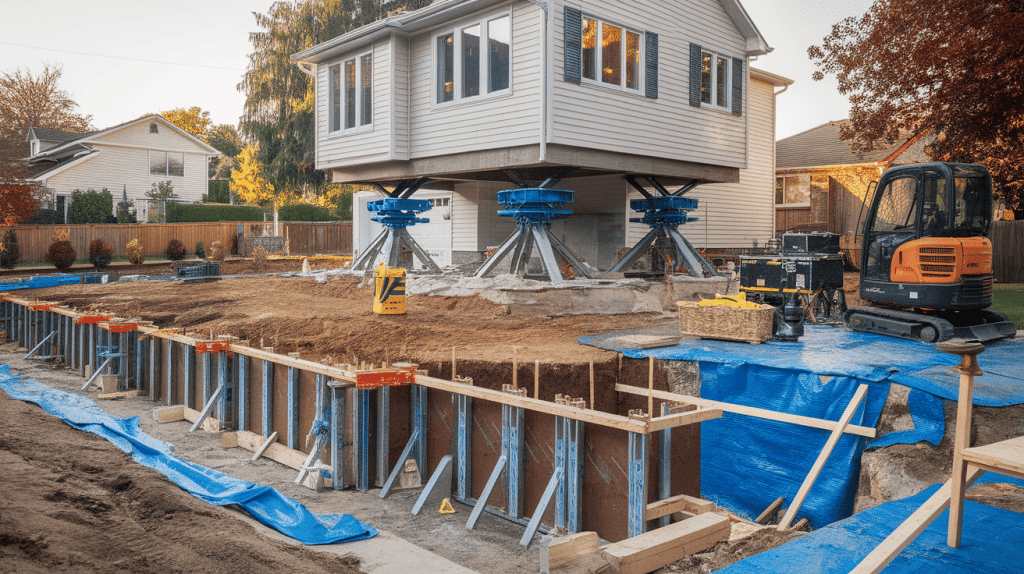
Contractors begin by preparing your house for the work. This includes disconnecting utilities and protecting landscaping.
For jack-and-dig projects, workers install support beams and hydraulic jacks. The lifting process happens gradually over several days.
Underpinning projects start with installing temporary support systems. Workers dig small sections while maintaining structural integrity.
Step 4. Excavation and Foundation
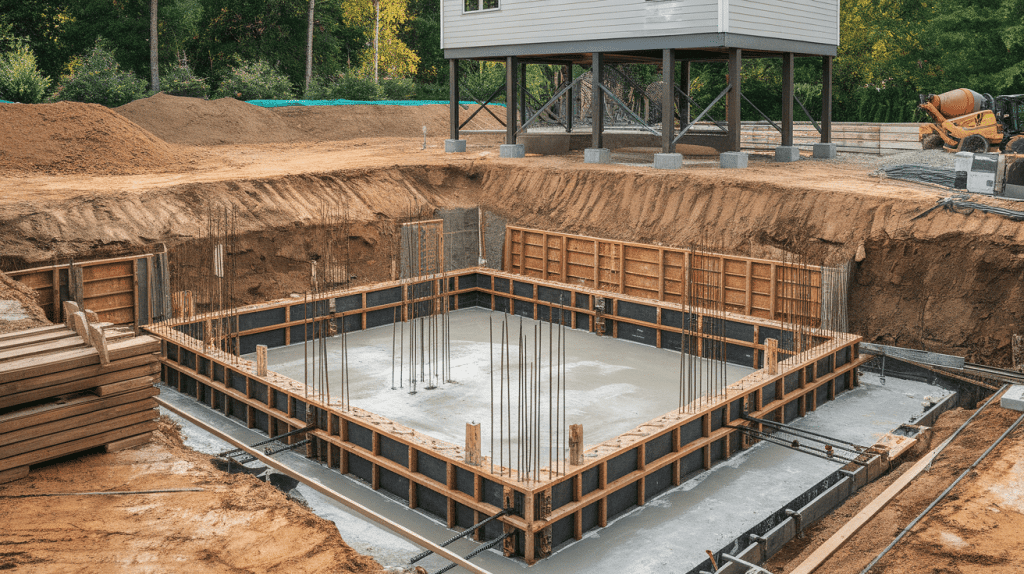
Once the house is secured, excavation begins. Workers remove soil to create the basement space. They haul away tons of dirt during this phase.
Foundation walls go up next. Contractors pour concrete footings first, then build the walls. Proper curing time ensures strong foundations.
This phase typically takes 2-4 weeks. The weather can delay concrete work. Plan for potential schedule changes.
Step 5. Waterproofing
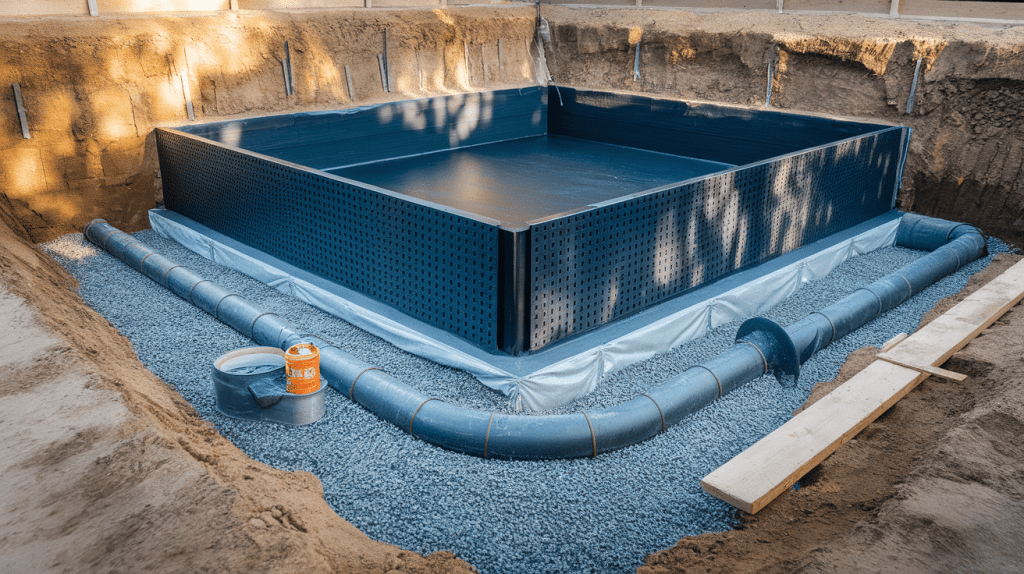
Waterproofing happens before backfilling around the foundation. Workers apply membrane systems to exterior walls. They also install drainage systems and sump pumps.
Interior waterproofing encompasses vapor barriers and effective drainage systems. Proper moisture control prevents future problems. Don’t skip this critical step.
Good waterproofing costs money upfront but saves thousands later. Moisture problems in basements are expensive to fix after construction.
Step 6. Utility and Interior Finishing
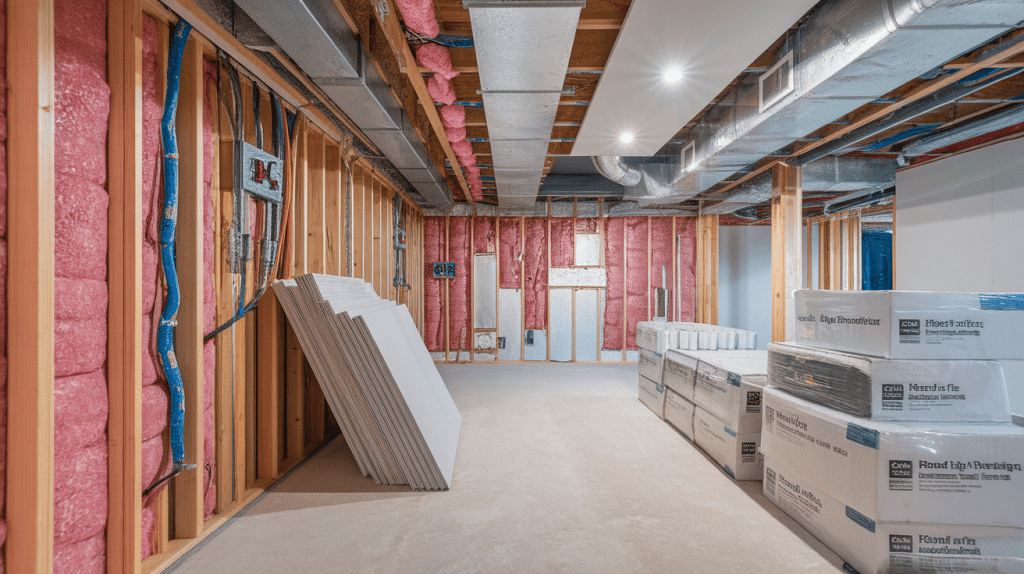
Rough utility work comes first. Electricians, plumbers, and HVAC contractors install basic systems. Inspectors check this work before the walls close up.
Insulation and drywall installation follow utility work. This makes the space feel like part of your home. Proper insulation keeps the basement comfortable.
Flooring, lighting, and final fixtures complete the project. Choose materials that handle basement conditions well. Avoid materials that suffer from moisture damage.
Step 7. Final Inspections
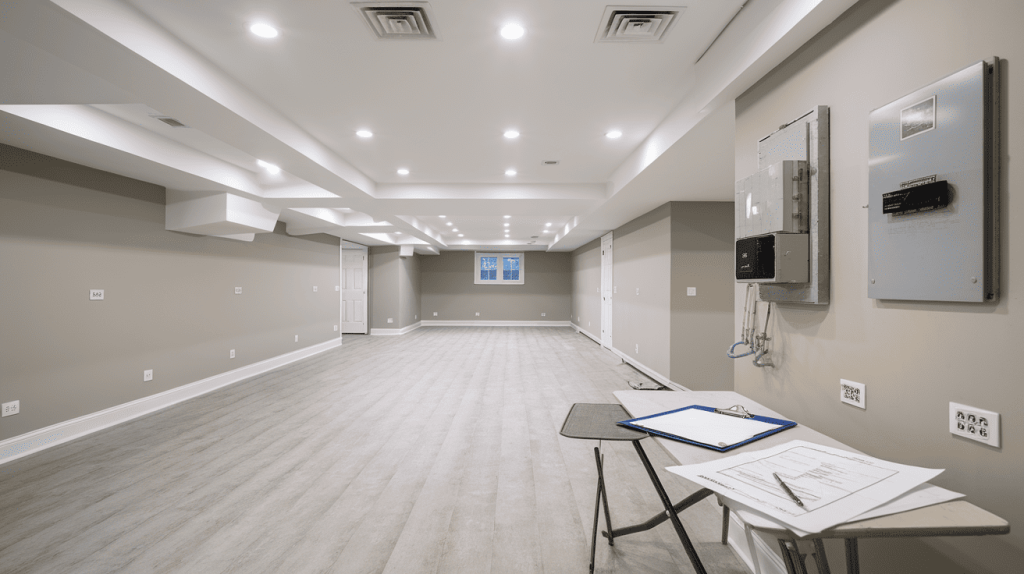
Building inspectors check the completed work. They verify code compliance and safety features. Pass all inspections before using your new basement.
Some cities require multiple inspections during construction. Schedule these in advance to avoid delays. Failed inspections mean fixing problems before proceeding.
Cost Breakdown
The cost to add a basement varies widely based on several factors. Understanding these costs helps you budget properly.
| Cost Category | Price Range | Details |
|---|---|---|
| Jack-and-Dig Method | $40,000 – $80,000 | Basic excavation and foundation work. Includes house lifting, digging, and new foundation walls. |
| Underpinning Method | $50,000 – $100,000 | Staged approach with extra support systems. Higher cost due to complex structural requirements. |
| Permits and Plans | $3,000 – $13,000 | Building permits ($1,000-$5,000) plus structural engineering plans ($2,000-$8,000). |
| Waterproofing | $5,000 – $15,000 | Exterior waterproofing, drainage systems, and sump pumps. Critical for moisture protection. |
| Utility Connections | $8,000 – $20,000 | Moving or extending plumbing, electrical, and HVAC systems throughout the basement. |
| Basic Finishing | $15,000 – $40,000 | Drywall, flooring, lighting, and basic fixtures. Higher-end finishes cost significantly more. |
| Temporary Housing | $3,000 – $10,000 | Accommodation costs if you need to move out during major construction phases. |
Total Project Cost Range
Most homeowners spend between $75,000 and $200,000 for a complete basement addition. Simple projects in favorable conditions cost less. Complex projects with high-end finishes cost more.
Location affects costs significantly. Urban areas with limited access cost more than suburban projects. Soil conditions also impact the final price.
Get quotes from multiple contractors. Prices vary significantly between companies. Make sure quotes include all necessary work and permits.
Alternatives to Adding a Basement
Adding a basement isn’t right for every home or budget. Several alternatives can give you extra space for less money.
- Garage Conversions create immediate living space for $10,000 to $25,000 for basic conversions. This project works well for offices, bedrooms, or family rooms. You lose parking space but gain a climate-controlled living area. Check local codes before converting, as some cities require a minimum parking spaces.
- Attic Conversions add bedrooms, offices, or storage space with costs ranging from $15,000 to $50,000, depending on complexity. Attic projects require adequate ceiling height and floor support. Most attics need structural reinforcement for living space use. Access stairs take up space in lower levels, so plan stair placement carefully.
- Accessory Dwelling Units (ADUs) are separate living spaces on your property that work as rental units, guest quarters, or family member housing. Building an ADU costs $80,000 to $200,000 and includes a full kitchen, bathroom, and living facilities. ADUs can generate rental income to offset costs. Local zoning rules govern ADU construction, so research rules before planning.
- Home Extensions add rooms to your home’s footprint and create space without going underground. Extensions cost $100 to $300 per square foot and work well for kitchens, bedrooms, or family rooms. You need adequate yard space and proper foundation access. Extensions require foundation work, but less than basement additions.
- Shed or Outbuilding Conversions turn large sheds into workshops, offices, or storage spaces for $5,000 to $15,000 in basic conversions. These spaces work well for hobbies, storage, or seasonal activities. They don’t add living space value but improve functionality. Utility connections increase costs significantly, so plan for electrical, plumbing, or HVAC needs in your budget.
Final Thoughts
Adding a basement to your house represents a significant but worthwhile investment for many homeowners seeking extra space. The project requires careful planning, proper permits, and skilled contractors to ensure success.
You can add a basement using either jack and dig or underpinning methods, depending on your specific situation. Both approaches create valuable living space below ground level.
If a full basement addition seems too complex or expensive, consider alternatives like garage conversions or attic finishing, which may provide the extra space you need at a lower cost.
Ready to move forward? Begin by consulting with structural engineers and contractors to assess the feasibility of adding a basement to your home.

